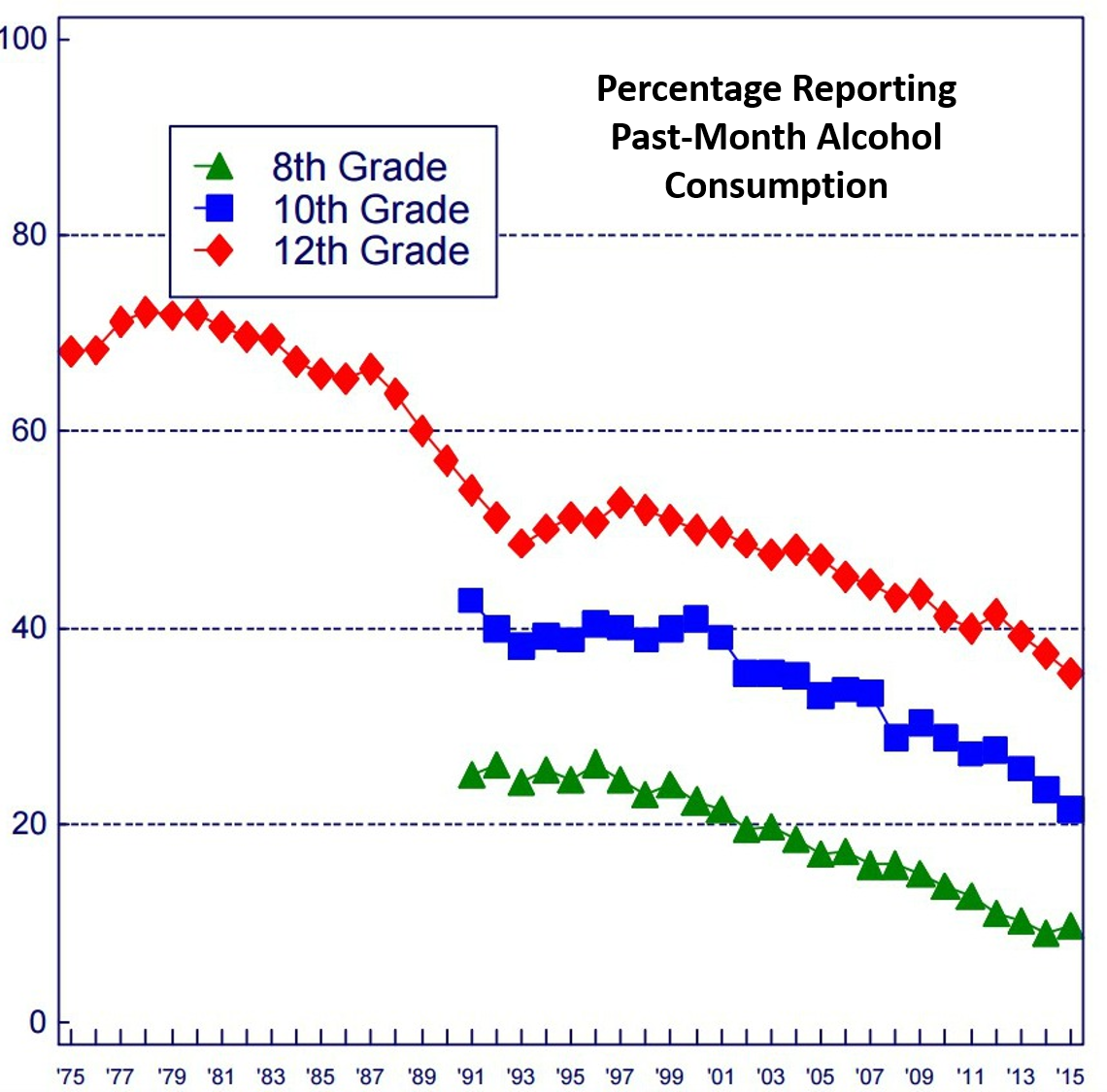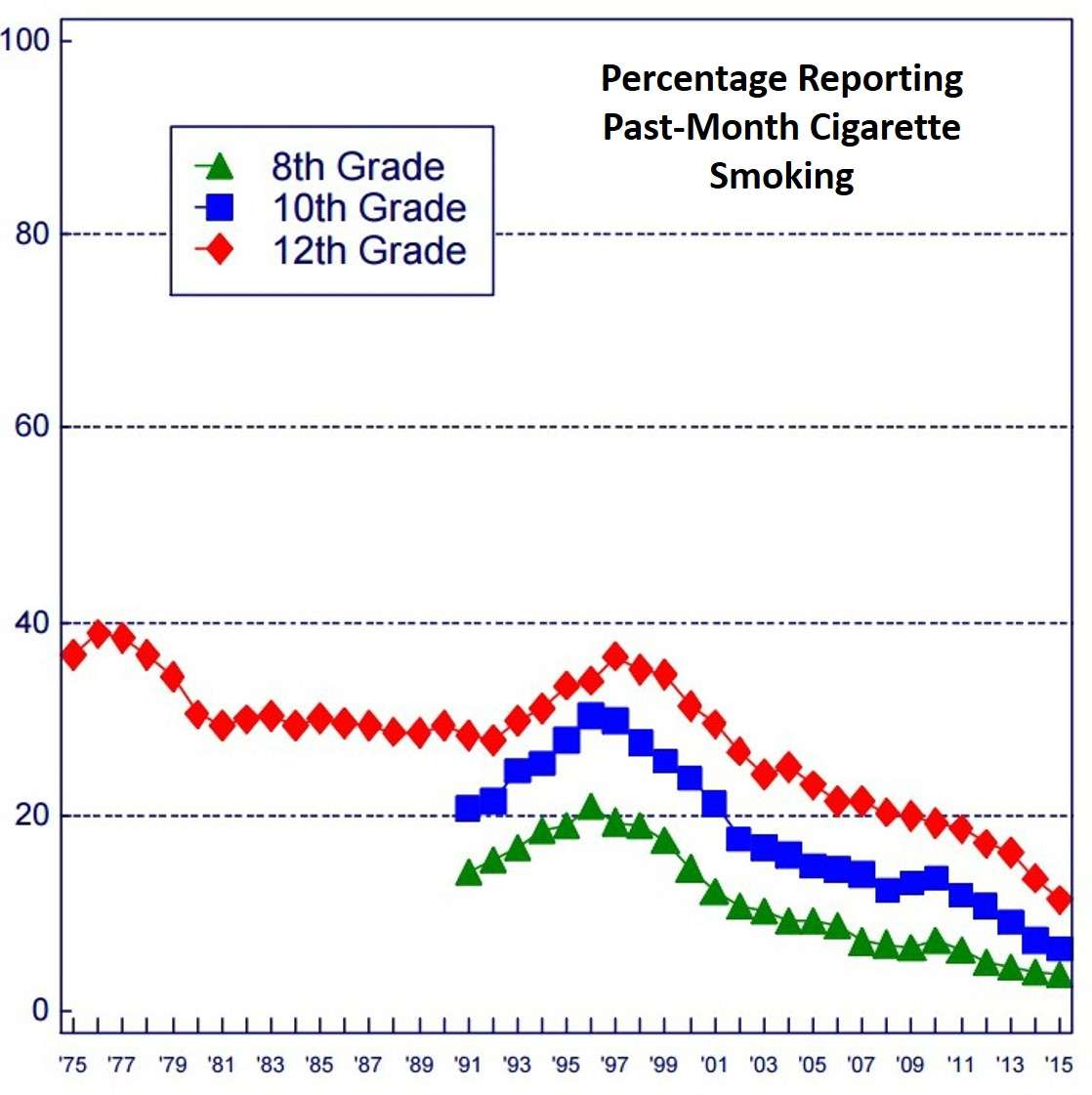Teenagers Are Smoking and Drinking Less Than Ever Before
Cannabis consumption is up since the early 1990s but still substantially lower than in the '70s.

According to survey data released today, drinking and cigarette smoking are less common among teenagers today than at any point in the last four decades. In this year's Monitoring the Future (MTF) Study, which is funded by the National Institute on Drug Abuse and conducted by researchers at the University of Michigan, 35.3 percent of high school seniors reported that they had consumed alcohol in the previous month, compared to 68.2 percent in 1975, when the survey began. Past-month cigarette smoking fell from 36.7 percent to 11.4 percent during the same period.

The continued decline in smoking belies warnings that the rising popularity of electronic cigarettes would boost consumption of the real thing. MTF, which first asked about e-cigarettes in 2014, found them a bit less popular this year: Past-month use rose from 8.7 percent to 9.5 percent among eighth-graders but fell from 16.2 percent to 14 percent among 10th-graders and from 17.1 percent to 16.2 percent among 12th-graders. But in the National Youth Tobacco Survey, which is sponsored by the U.S. Centers for Disease Control and Prevention, vaping and smoking trends have been moving in opposite directions for several years.
The share of 12th-graders reporting heroin use in the previous year also has fallen sharply since 1975, from 1 percent to 0.5 percent. MTF, like the National Survey on Drug Use and Health, indicates that heroin use among teenagers has been flat or declining in recent years, although the latter survey shows an increase in other age groups.
MTF indicates that cannabis consumption by teenagers this year is about as common as last year, with 21 percent of high school seniors reporting past-month use. That rate is 79 percent higher than in 1992 but still 38 percent lower than in 1978, when a record 37 percent of 12th-graders said they had smoked pot in the previous month. Compared to the early 1990s, teenagers are more likely to be cannabis consumers but less likely to be drinkers or cigarette smokers, which in terms of health hazards is probably a good tradeoff.
Notably, marijuana use by teenagers generally has been flat or falling since 2012, when Colorado and Washington became the first two states to legalize cannabis for recreational use (by adults 21 or older). Alaska, Oregon, and the District of Columbia followed suit last year.
"Youth marijuana use is stable, and even falling in some categories, all while a growing number of states enact legalization," says Betty Aldworth, executive director of Students for Sensible Drug Policy. "This new data solidifies early indications that the scare tactics peddled by prohibitionists are false. Criminalization isn't the way to encourage young people to make healthy choices; regulating a legal market and honest, reality-based education is. That fact is made even more clear by the continued reduction in youth tobacco and alcohol use. We didn't need to put anyone in handcuffs or jail cells to convince an historic number of students to avoid smoking and drinking. These reductions were achieved with honest, evidence-based public health strategies and not by criminalizing cigarettes or beer. Drug use is a health matter and should be treated that way."



Show Comments (45)